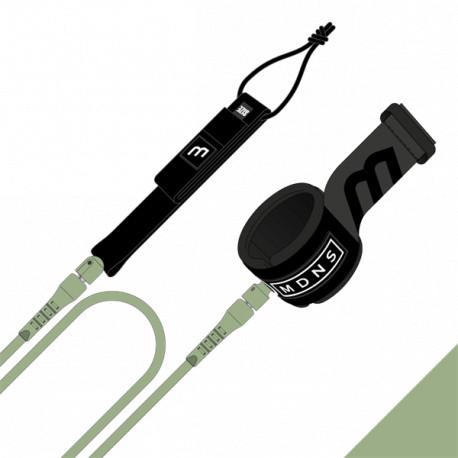When it comes to dog training, the journey between a well-behaved companion and a rambunctious pup can often feel like navigating a tightrope. For many pet owners, finding the right balance of freedom and control is essential, not just for fostering obedience but for enhancing the bond between human and canine. Enter the long leash—a versatile tool that combines the best of both worlds. Offering your furry friend a degree of freedom while maintaining the ability to guide and correct their behavior, a long leash opens up a world of training possibilities. In this article, we will explore the advantages of using a long leash for training, the techniques that work best, and how this simple yet effective tool can transform your training sessions into enjoyable experiences for both you and your dog. Whether you’re preparing for a lively recall exercise in an open field or just looking to improve your dog’s socialization skills, a long leash might just be the key to unlocking a new level of connection and trust.
Table of Contents
- Understanding the Benefits of a Long Leash in Dog Training
- Selecting the Right Long Leash for Your Training Needs
- Effective Techniques for Using a Long Leash During Training Sessions
- Common Mistakes to Avoid When Training with a Long Leash
- Q&A
- In Summary
Understanding the Benefits of a Long Leash in Dog Training
Training your dog with a long leash can enhance both the experience and effectiveness of the process. A long leash allows for increased freedom while still providing control, striking a perfect balance that encourages a dog’s natural instinct to explore. This form of training can be particularly beneficial in open spaces where your dog can roam and interact with their environment, fostering a sense of confidence and independence. Key advantages include:
- Safety: Keeping your dog secure while they explore their surroundings.
- Recall Training: Helping to improve their recall by allowing them to engage at a distance.
- Controlled Exploration: Allowing your dog to enjoy a wide range while still under your supervision.
- Socialization Opportunities: Facilitating safe interactions with other dogs and people.
Moreover, using a long leash during training sessions can also enhance communication between you and your dog. Engaging in activities such as fetch or agility can take on an exciting twist with the added length, keeping your dog motivated and eager to follow commands. By implementing a long leash, you can effectively encourage desirable behaviors without creating a sense of confinement. Here’s a quick comparison of the leash options:
| Leash Type | Control Level | Best For |
|---|---|---|
| Short Leash | High | City/Busy Areas |
| Standard Leash | Medium | Daily Walks |
| Long Leash | Moderate | Open Spaces |
Selecting the Right Long Leash for Your Training Needs
Choosing the ideal long leash for your dog’s training can make a significant difference in your training sessions. First, consider the material of the leash. Options include nylon, cotton, and leather, each offering different levels of durability and comfort. If you’re working in wet conditions, a water-resistant material could be beneficial. Additionally, it’s essential to assess the length of the leash—not too short to limit your dog’s freedom, and not too long to lose control. Ideally, a leash between 15 to 30 feet allows for a balanced mix of freedom and control, especially in open areas.
Another consideration is the clip mechanism. Leashes come with various types of clips—some are more secure than others. A quality snap hook or a swivel clip can prevent accidental escapes during training. You may also want to think about the color and design of the leash; while this is primarily aesthetic, vibrant colors can enhance visibility, which is practical for training in parks or crowded spaces. To simplify your options, here’s a quick overview of some features that might help in your selection:
| Feature | Description |
|---|---|
| Material | Nylon, Cotton, Leather—choose based on durability and weather conditions |
| Length | 15-30 feet for a good balance of freedom and control |
| Clip Type | Secure snap hooks or swivel clips for safety |
| Visibility | Bright colors for enhanced visibility in various settings |
Effective Techniques for Using a Long Leash During Training Sessions
When incorporating a long leash into your training sessions, it’s essential to understand how to wield this tool effectively. The long leash gives your dog the freedom to explore while still providing you with control over their movements. Start by setting a clear boundary; choose a safe, open area where distractions are minimal. This could be a quiet park or a spacious backyard. Use the long leash to establish a recall command, rewarding your dog every time they return to you. This creates a positive association with coming back, even when they have the freedom to wander.
Another effective technique is to teach your dog stop-and-release commands associated with the long leash. As your dog ventures out on the leash, practice signaling them to stop: simply say “stop” combined with a hand signal, and gently pull the leash to guide them back to you if necessary. Additionally, leverage the long leash for confidence-building exercises like obstacle courses or agility drills to encourage your dog to navigate challenges independently while still connected to you. Here’s a quick reference table to summarize some useful training tips:
| Technique | Description |
|---|---|
| Recall Training | Reward your dog for returning to you on command. |
| Stop-and-Release | Teach your dog to stop on command while exploring. |
| Obstacle Training | Use the leash to guide your dog through various challenges. |
Common Mistakes to Avoid When Training with a Long Leash
Training with a long leash can be an effective way to give your dog more freedom while still maintaining control, but it’s essential to avoid certain pitfalls that can hinder progress. One common mistake is allowing the leash to become too slack, which can give your dog the impression that they are free to roam without boundaries. This can lead to confusion and disobedience. Instead, keep the leash taut but not restrictive, ensuring that your dog understands the limits while still feeling the thrill of exploration.
Another mistake is neglecting proper leash management. When your dog is exploring, an untidy or tangled leash can easily become a hazard. Always be mindful of the leash’s placement—hold it in such a way that you can quickly reel your dog in if necessary. Additionally, consider practicing recall commands frequently during training sessions, ensuring that your dog understands the importance of returning when called, regardless of the distractions present. Here are some key points to remember:
| Mistake | Consequence |
|---|---|
| Letting the leash go slack | Dog loses boundaries, becomes confused |
| Poor leash management | Risk of tangling or losing control |
| Ignoring recall practice | Increased likelihood of disobedience |
Q&A
Q&A on Long Leash Dog Training
Q: What is a long leash, and how is it used in dog training?
A: A long leash, typically measuring between 15 to 30 feet, is a training tool that allows dogs the freedom to roam while still being under the owner’s control. It enables handlers to practice recall and other commands in a more spacious environment, mimicking off-leash conditions while maintaining a safety net.
Q: What are the advantages of using a long leash for dog training?
A: The long leash offers numerous benefits, such as enhancing the dog’s ability to explore and engage with their surroundings, which is essential for mental stimulation. It promotes freedom, encourages better recall skills, and fosters a sense of safety for the dog when faced with distractions, allowing owners to intervene if necessary.
Q: How does using a long leash aid in developing recall skills?
A: A long leash allows trainers to gradually increase the distance between themselves and their dogs during recall exercises. This method helps dogs learn to respond to their names and commands even when they’re farther away, reinforcing the behavior without immediate fear of losing control.
Q: Are there any precautions to take when using a long leash?
A: Absolutely! It’s wise to ensure that the environment is safe and free from hazards. Additionally, keep an eye out for distractions that might overwhelm your dog. Regularly check the leash for wear and tear to avoid accidents, and always be mindful of other people and pets in the vicinity.
Q: Can any dog benefit from long leash training?
A: Most dogs can benefit from this approach, especially those with high energy or strong prey drives. However, it’s essential to consider the dog’s temperament and prior training. For some, a long leash may provide the stimulation they need, while for others, it might be overwhelming.
Q: How do you start training with a long leash?
A: Begin by letting your dog adjust to wearing the long leash in a familiar setting. Gradually allow them to explore within a radius while practicing basic commands. Use treats and positive reinforcement to build their confidence and willingness to come back when called. Always ensure training sessions are kept enjoyable and stress-free.
Q: How does long leash training differ from off-leash training?
A: Long leash training provides a controlled environment for building skills without the risk of complete freedom. Unlike off-leash training, where the dog is entirely free, the long leash ensures safety while allowing the dog to experience a wider range of movement and exploration, thus bridging the gap between on-leash and off-leash training.
Q: Is there any specific gear recommended for long leash training?
A: Yes! It’s crucial to choose a durable, lightweight leash that’s comfortable for you to handle. Look for features such as a padded handle or a swivel clip to prevent tangling. A harness can also be a great choice to prevent pulling and provide additional comfort for the dog.
Q: Can long leash training be incorporated into regular walks?
A: Definitely! Using a long leash during regular walks offers your dog the chance to sniff, explore, and engage their environment while still practicing control and training. It can turn ordinary walks into interactive sessions that enrich both your lives while reinforcing all that important obedience work.
Q: How long should training sessions last with a long leash?
A: Consider keeping training sessions short and engaging—around 10 to 15 minutes—especially for puppies or young dogs with shorter attention spans. Gradually increase the duration as their focus improves, ensuring they stay excited and responsive throughout the exercise.
Through a creative combination of independence and guidance, long leash training opens an exciting path for dogs and their owners alike—a route that leads to deeper bonds, better behavior, and a harmonious partnership.
In Summary
the long leash approach to dog training opens up a world of possibilities for both you and your furry companion. It fosters a sense of freedom while simultaneously reinforcing essential commands and behaviors, striking a harmonious balance between trust and control. As you embark on this training journey, remember that patience and consistency are your best allies. With time, your bond with your dog will deepen, and both of you will enjoy the benefits of a well-trained, happy pet. So take that leap, grab that long leash, and watch as your dog thrives in the great outdoors, exploring the world while learning to respond to your guidance. The adventure awaits!



